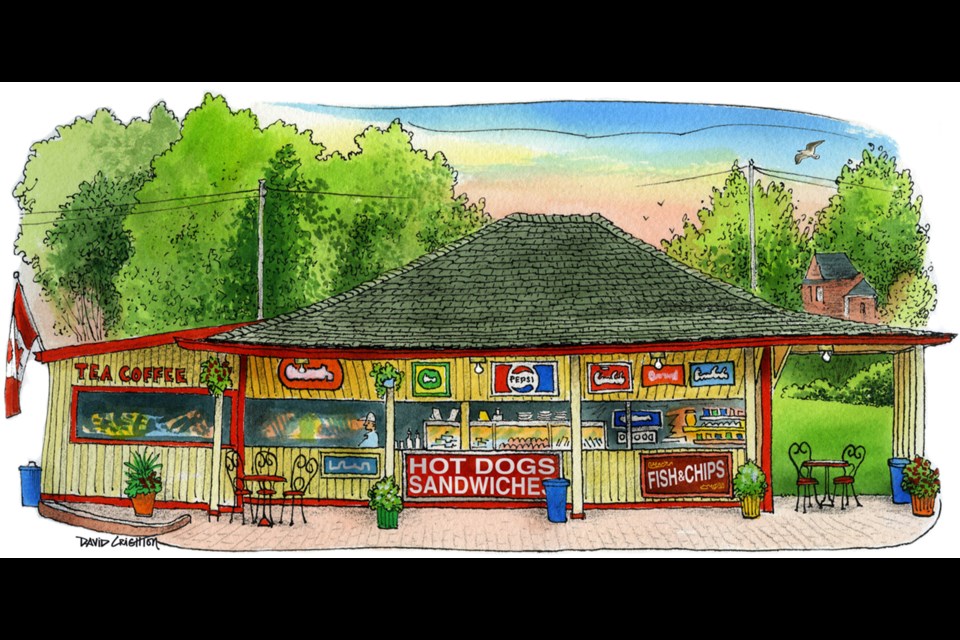David Crighton is the featured artist for the month of November at Hibernation Arts Gallery, 17 Peter St. S., Orillia. The studio is open from Tuesday to Saturday from 11 a.m. to 4 p.m. His work can also be viewed at his website. The following review is written by Michael Hoechsmann, professor, Lakehead University, Orillia.
David Crighton’s artwork tells the story of cities, large and small. More a surveyor or architect than a cartographer, Crighton gets into the bones of a city, its buildings, businesses, venues, and homes. Brick by brick, he documents the structures in which life is lived and culture is made in southern and central Ontario.
The constitutive element of many of Crighton’s illustrations is the brick, usually of the reddish, ochre hue of late 19th- and early 20th-century construction practices in central Canada. This motif lends a unifying feeling to his work and permits him to make unexpected collages with buildings that are not in reality adjacent to one another.
It is remarkable that these drawings evoke the cultural life of urban spaces without the everyday hustle and bustle of people on streets and in front of buildings. They are like that perfect photo that one awaits when a crowd thins and disappears. But the images are not unpeopled; we, the viewers, are assumed, built into the artistic exchange.
These images, and the buildings depicted, are for audiences to admire, and they improve with time as they move indelibly from chronicle to nostalgia. In the process, they become part of our collective memory, commemorations of moments already experienced, or aspirational and vicarious glimpses into the potentials of the urban landscape.
Crighton’s illustrations impart an aura that conjures up the awe a bystander and citizen can feel at the architectural magnificence of their surroundings. Quotidian structures such as houses and mansions are striking once rendered as art. A series of theatre marquees reflect a love of musical performances and live theatre. Images of municipal or university buildings show the power vested in community structures.
Crighton brings a steady hand and a creative eye to his illustration practice. Detailed and precise, the images he produces look like animated photographs. This animating spirit is present in two ways: on the one hand, there is a comic strip like dimension to this work. It is “popular art” that recuperates the work of the illustrator into artistic practice.
On the other hand, his animating style also breathes life into inert structures. It lights them, warms them, dramatizes them, and memorializes them. It is no wonder that part of Crighton’s livelihood is made from commissions, and, in some cases, specifically of homes that people are leaving.
For the “locals” who are interpellated by the scenes — be they of Toronto, Orillia, or Bracebridge — these images are nostalgic reflections of lives lived. They are a visual equivalent of a hit song from times gone by; we can find ourselves in their timbre. For those from outside who discover these remarkable illustrations, they represent the enchantment of a close encounter with the local. They are slices of life, a deep drink from the well.
This work evokes nostalgia. And yearning. It is wistful, yet desirous. It is playful and artistic. And it is breathtakingly straightforward, a reflection of time standing still, of the bones of cities revealed.
Michael Hoechsmann is a professor at Lakehead University, Orillia.
